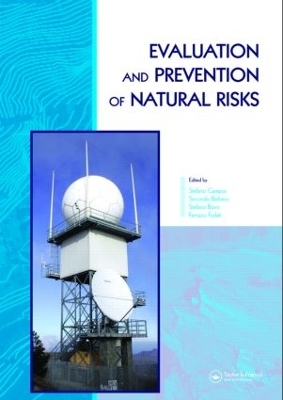
Evaluation and Prevention of Natural Risks
CRC Press (Verlag)
978-0-415-41386-2 (ISBN)
The assessment and prevention of risks inherent to natural phenomena is of topical interest to the scientific community and other authorities dealing with territorial management. Historical analysis carried out in the Piemonte-territory in north-western Italy, focusing on the consequences of hydrogeological risks, reveals that damage is continually increasing. This can partly be explained by the consistent expansion of urbanized areas at the expense of areas that are essential to the natural modelling processes of the region; the damage resulting from hydrogeological instability often being associated with incompatible territorial decisions. This text gives a detailed account of a series of experiences related to activities that ARPA Piemonte has carried out focusing on the cognitive and forecasting aspects related to risk assessment and alerting procedures.
Stefano Campus is an engineer graduated at the Technical University of Turin and has worked in the area of slope stability since 1994. Currently he works in the Centre of studies and applied research of Arpa Piemonte in the field of geological risk. His interests are devoted to application of slope stability methodologies in GIS environment. Secondo Barbero has been working on Flood Forecasting and Prevention since 1996. He is presently responsible for a hydrological task force group inside the Environmental Forecasting and Monitoring Unit of Arpa Piemonte. He is a main promoter and responsible for the design and management of the regional real-time network of meteorological and hydrometrical measurement stations. Stefano Bovo is a geologist by education. He is involved in the field of natural hazards for more than ten years. He is presently managing the Environmental Forecasting and Monitoring Unit at Arpa Piemonte. He is in charge of the management of the whole observational network and of the modelling system of the ground effects of extreme storms. The network was established in 1994, filling the gaps of the old national system with modern radio reporting installations, creating a very up-to-date real-time observational organization able to report the ground conditions at river level with very high detail in less then half an hour after the event. Ferruccio Forlati is presently the manager of the Centre of studies and applied research in the field of geological risk of Arpa Piemonte, a leading Centre devoted to the development of methodologies and tools to assess, manage and minimise the geological risk. Within these topics, an important activity is carried on in the field of thematic data collection, organisation and elaboration by means of GIS techniques and in the field of the management of several observational networks (slope and surface displacement).
PRESENTATION
FOREWORD
1. INTRODUCTION TO THE CONCEPT OF HAZARD AND RISK
1.1 FORECASTING, HAZARD, AND RISKS RELATED TO NATURAL PHENOMENA
1.2 FORECASTING NATURAL PHENOMENA FOR EMERGENCY MANAGEMENT
1.3 A KNOWLEDGE BASE AND THE DIFFUSION OF KNOWLEDGE AS SUPPORTS FOR THE ASSESSMENT OF HAZARD AND RISK
1.4 GLOSSARY
2. THE ASSESSMENT OF HAZARD AND RISK
2.1 METEOROLOGICAL PHENOMENA
2.2 THE LARGE ALPINE LANDSLIDES
2.3 ROCK FALLS
2.4 SHALLOW LANDSLIDES
2.5 TORRENTIAL PROCESSES
2.6 AVALANCHES
2.7 RIVER FLOODING
3. FORECASTING AND WARNING
3 FORECASTING AND ALERTS
3.1 METEOROLOGICAL FORECASTING
3.2 INDICATORS OF RAINFALL HAZARD
3.3 TOWARDS A DIFFERENT APPROACH TO FORECASTING METHODS
3.4 FORECASTING FLOODS
3.5 FORECASTING LANDSLIDES
4. THE UNCERTAINTY OF FORECASTING AND ASSESSMENT METHODS
4.1 THE UNCERTAINTY OF FORECASTING METHODS
4.2 THE CASE OF THE SCRIVIA RIVER ON SEPTEMBER 15-16, 2004
4.3 THE DEBRIS FLOW OF THE RIO FREJUS (BARDONECCHIA) - AUGUST 6, 2004
5 GENERAL CONCLUSIONS
| Erscheint lt. Verlag | 18.10.2007 |
|---|---|
| Zusatzinfo | 10 Tables, color; 10 Line drawings, color; 120 Illustrations, color |
| Verlagsort | London |
| Sprache | englisch |
| Maße | 174 x 246 mm |
| Gewicht | 1111 g |
| Themenwelt | Naturwissenschaften ► Biologie ► Ökologie / Naturschutz |
| Naturwissenschaften ► Geowissenschaften ► Geologie | |
| Technik ► Umwelttechnik / Biotechnologie | |
| ISBN-10 | 0-415-41386-9 / 0415413869 |
| ISBN-13 | 978-0-415-41386-2 / 9780415413862 |
| Zustand | Neuware |
| Haben Sie eine Frage zum Produkt? |
aus dem Bereich


